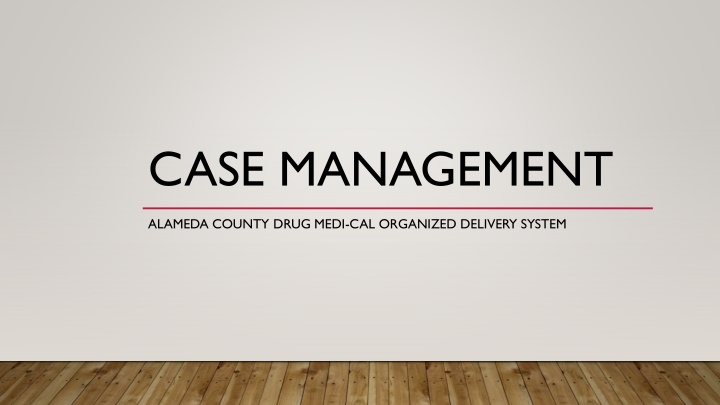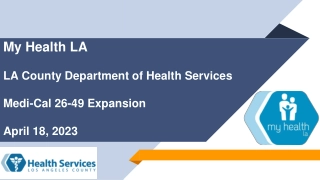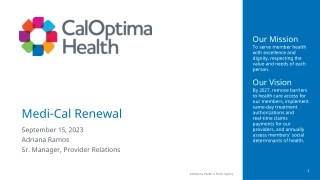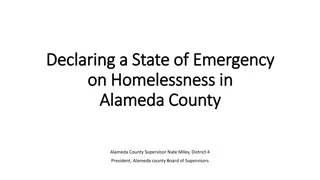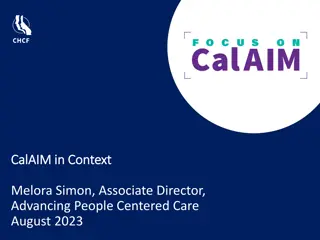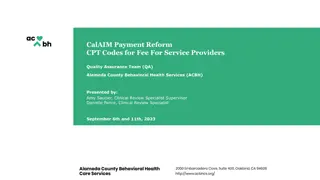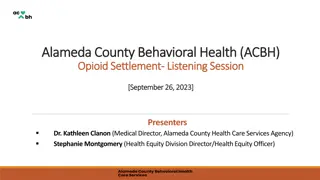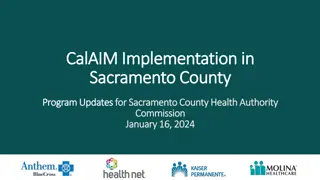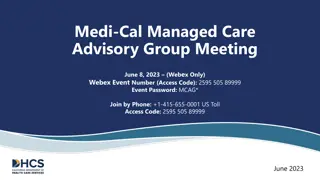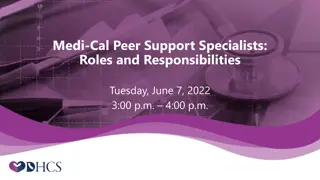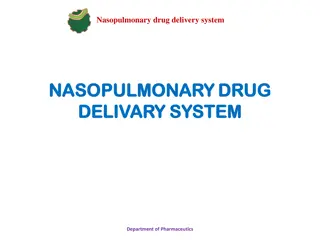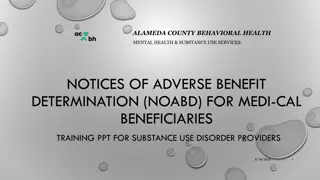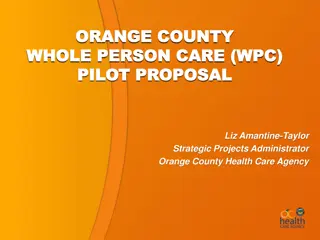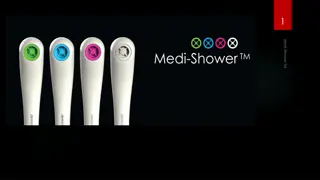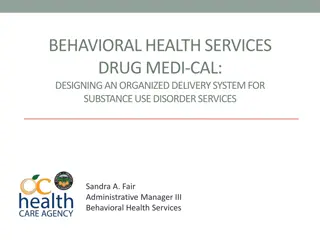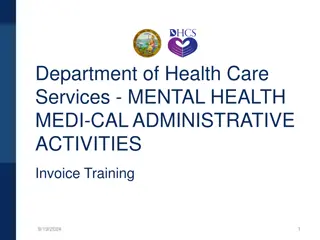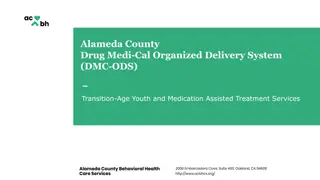Comprehensive Overview of Alameda County Drug Medi-Cal Organized Delivery System Case Management
Comprehensive overview of the Alameda County Drug Medi-Cal Organized Delivery System's case management services, focusing on assisting beneficiaries in accessing necessary medical, educational, social, and community services. It includes details on care coordination, service coordination, goal orientation towards providing the right care at the right time with the right provider, and the determination and transition processes for levels of care. Emphasis is placed on seamless transitions of care, referrals, ASAM levels of care, comprehensive assessments, and coordination of treatment services across various levels of care.
Download Presentation

Please find below an Image/Link to download the presentation.
The content on the website is provided AS IS for your information and personal use only. It may not be sold, licensed, or shared on other websites without obtaining consent from the author.If you encounter any issues during the download, it is possible that the publisher has removed the file from their server.
You are allowed to download the files provided on this website for personal or commercial use, subject to the condition that they are used lawfully. All files are the property of their respective owners.
The content on the website is provided AS IS for your information and personal use only. It may not be sold, licensed, or shared on other websites without obtaining consent from the author.
E N D
Presentation Transcript
CASE MANAGEMENT ALAMEDA COUNTY DRUG MEDI-CAL ORGANIZED DELIVERY SYSTEM
WHAT IS CASE MANAGEMENT? Service that assist a beneficiary to access needed medical, educational, social, prevocational, vocational, rehabilitative, or other community services. Focus on coordination of SUD care, integration around primary care especially for beneficiaries with a chronic substance use disorder, and interaction with the criminal justice system, if needed. Provided by a LPHA or a certified counselor. Provided face-to-face, by telephone, or by telehealth with the beneficiary and may be provided anywhere in the community
1. CARE COORDINATION + 2. SERVICE COORDINATION = 3. CASE MANAGEMENT Care Coordination Activities associated with providing for seamless transitions of care for beneficiaries in the DMC-ODS system of care without disruption of services. Service Coordination Services that assist beneficiaries to access needed medical, mental health, housing, educational, social, prevocational, vocational, rehabilitative or other community services.
GOAL: Right care, at the Right Time, with the Right Provider CARE COORDINATION BEGINS AT THE FRONT DOOR Upon screening, the beneficiary will be referred/linked to the appropriate ASAM level of care (LOC). Placement considerations include results from the ASAM screening, geographic accessibility, threshold language needs, and the beneficiary s preferences. The beneficiary will be referred to BHCS SUD network providers for an intake appointment for the following services: ASAM 1.0 and 2.1Outpatient, Intensive Outpatient, and Recovery Support Services ASAM 1.0 and 2.1 Perinatal Outpatient, Intensive Outpatient, and Recovery Support Services ASAM OTP 1.0 Opioid Treatment Programs ASAM 3.2 Residential Withdrawal Management ASAM 3.1, 3.3 or 3.5 - Residential services ASAM 3.1, 3.3 or 3.5 - Perinatal/Parenting Residential Recovery Residence (adjunct to outpatient, intensive outpatient or recovery support)
GOAL: Right care, at the Right Time, with the Right Provider LEVEL OF CARE The final LOC determination for placement is based on the comprehensive assessment, and may override the determination from the initial screening process. In the event that a full comprehensive assessment yields a different LOC, the provider shall be responsible for transitioning the beneficiary to the appropriate level of care, which may include transitioning (and providing or arranging transportation) to another provider facility. For residential cases, the provider may work with the beneficiary s Care Navigator to successfully transition to a new provider. Treatment services are to be coordinated across Levels of Care (LOC); from the initial point of contact, first call or in-person visit, first offered appointment, referral, intake/assessment and determination of medical necessity, treatment planning, transition planning, discharge, and recovery support services. Prior to any changes in the LOC, the SUD service provider must conduct an A-LOC re-assessment.
ONE DESIGNATED COORDINATOR All beneficiaries shall have an ongoing source of care appropriate to their needs with an SUD provider case manager designated as primarily responsible for coordinating services. Beneficiaries will be informed as to whom to contact, and how to contact, their designated case manager upon initial intake into an SUD treatment program. For Narcotic Treatment Programs, the individual counselors will provide this function.
WHEN DOES CARE COORDINATION OCCUR? Throughout treatment AND between settings of care Includes appropriate discharge planning for short term and long-term hospital and institutional stays. WHO DOES CARE COORDINATION OCCUR WITH? Beneficiary Other SUD providers in BHCS network serving the beneficiary Services beneficiary receives from any other managed care organizations or provider of health services, including primary care, Specialty Mental Health Services, and care management / health home services. Services the beneficiary receives from the community and social support providers.
CO-OCCURRING NEEDS & OTHER SERVICES At intake, and ongoing throughout SUD treatment, providers will assess to identify any ongoing conditions that may require treatment for co-occurring disorders or additional needs requiring services delivered by other care providers. The assessment will indicate such conditions in the treatment plan and will ensure linkage to the appropriate service providers. Treatment plans for beneficiaries with co-occurring mental health, physical health, or other needs requiring supportive services (e.g. housing, child welfare, probation) shall be: Developed with beneficiary participation, and in consultation with any providers of care or care management for the beneficiary; Developed by a person trained in person-centered planning using a person-centered process and a plan as defined in 42 CFR 441.301(c)(1); Reviewed and revised upon reassessment of functional need, at least every 90 days, or when the beneficiary s circumstances or needs change significantly, or at the request of the beneficiary per 42 CFR 441.301(c)(3)
LINKING, REFERRING, & COORDINATING SUD Providers will ensure that beneficiaries who need treatment for co-occurring mental health or physical health needs, have access to services from other qualified providers as appropriate for the beneficiary s condition(s). SUD Provider will refer to managed care plan, primary care provider, Federally Qualified Health Center, provider of Care Management / Health Home Services, homeless assistance, supportive housing, the BHCS ACCESS line for specialty mental health services, or other agencies. SUD treatment providers will be responsible for coordinating SUD treatment with the other agencies and services to which the beneficiary is referred during the beneficiary s episode of SUD treatment.
ROLE OF CARE NAVIGATORS The Care Navigator will maintain at least monthly contact with the beneficiary through the time that he/she is engaged in Residential treatment or Recovery Residences. The primary job of the Care Navigator will be to ensure that the beneficiary successfully connects with and engages in treatment; Ensure that the beneficiary successfully connects with subsequent treatment services recommended post- residential. For a beneficiary who is experiencing homelessness at the time of entry into residential treatment, the Care Navigator will ensure that the beneficiary is assessed for potential housing assistance that may be accessed through a Housing Resource Center (Alameda County s coordinated entry system for homeless assistance). In the event that a beneficiary is placed on a residential waitlist, the Care Navigator will ensure that interim services are provided during the period of time that the beneficiary is waiting for SUD treatment.
COORDINATING REQUIRES SHARING INFORMATION BHCS and its contracted providers may share with DHCS or other managed care organizations or providers of care management serving the beneficiary the results of any identification and assessment of the beneficiary s needs to facilitate effective care coordination, and to prevent duplication of case management activities or other services, with appropriate client Release of Information in place. Each provider furnishing services to beneficiaries will maintain and share, as appropriate, a beneficiary s health record in accordance with lawful and professional standards. In the process of coordinating care, each beneficiary s privacy will be protected in accordance with privacy requirements in 45 C.F.R. parts 160 and 164 subparts A and E and 42 CFR Part 2, to the extent that they are applicable.
DISCHARGE & TRANSITIONS IN TREATMENT At Program exit, whether due to a change in LOC based on re- assessment, or treatment completion, the SUD treatment provider staff from the existing program will coordinate with the new SUD treatment provider to help facilitate transfer of care and provide support while the beneficiary engages in the new LOC services. Case managers must facilitate warm hand-offs between LOC, which may require collaboration from staff at both SUD programs. This collaboration may include, but is not limited to, communication though emails or phone calls, transportation or other practical supports. For beneficiaries exiting the DMC-ODS, the treatment provider should coordinate and communicate with other care providers or care managers still serving the beneficiary for the purpose of facilitating a smooth landing and to prevent negative outcomes such as victimization, crisis, or homelessness.
RECOVERY SUPPORT SERVICES ALAMEDA COUNTY DRUG MEDI-CAL ORGANIZED DELIVERY SYSTEM
RECOVERY SUPPORT SERVICES (RSS) Recovery Services Promote the beneficiary s role in managing their own health, develop effective internal coping and self-management resources, and an external network of support to sustain recovery. Available as medically necessary after completing formal course of treatment. Services are available to beneficiaries whether they are: Triggered, Have relapsed, or As a preventative measure to prevent relapse Person-centered Recovery Plan for ongoing recovery and relapse prevention that builds on treatment discharge plan. Characteristics of this plan include: Individualized plan that includes specific goals and objectives Transition from treatment to Recovery Support Services Include plan for recovery and relapse prevention developed during discharge planning when treatment was completed. Development of a personal network of support
COMPONENTS OF RECOVERY SUPPORT SERVICES (RSS) Outpatient Counseling Individual or group counseling to stabilize beneficiary, then reassess if further care is needed. Recovery Monitoring Includes recovery coaching and monitoring via telephone/telehealth. Substance Abuse Assistance Peer to peer services and relapse prevention. (Pending State approval) Support for Education & Job Skills Linkages to life skills, employment services, job training, and education services. Family Support Linkages to childcare, parent education, child development support services, and family/marriage education. Support Groups Linkages to self-help and faith-based support. Ancillary Services Linkages to housing assistance, transportation, case management, and individual services coordination.
TREATMENT SETTINGS & STAFF Service Delivery. Recovery Services can be provided in the following ways: Face-to-Face Telephone Telehealth In the community Broad Range of Providers. Recovery Services may be provided by: Licensed Practitioner of Health Arts (LPHA) Certified Counselor Peer Counselor (when provided as substance abuse assistance services as a component of recovery support services) (Pending State approval)
WHEN TO USE RECOVERY SUPPORT SERVICES Post-Treatment. Recovery Services are made available to eligible beneficiaries after they complete their course of treatment. Relapse Prevention and / or Early Intervention. Whether they are triggered, have relapsed, or as a preventative measure to prevent relapse. Recovery Environment. When assessment and treatment needs of Dimension 6, Recovery Environment of the ASAM Criteria are met and during the transfer/transition planning process. Medically Necessary. When a Medical Director or LPHA has determined that recovery services are medically necessary and, after the DMC-ODS beneficiary is discharged from SUD treatment services.
